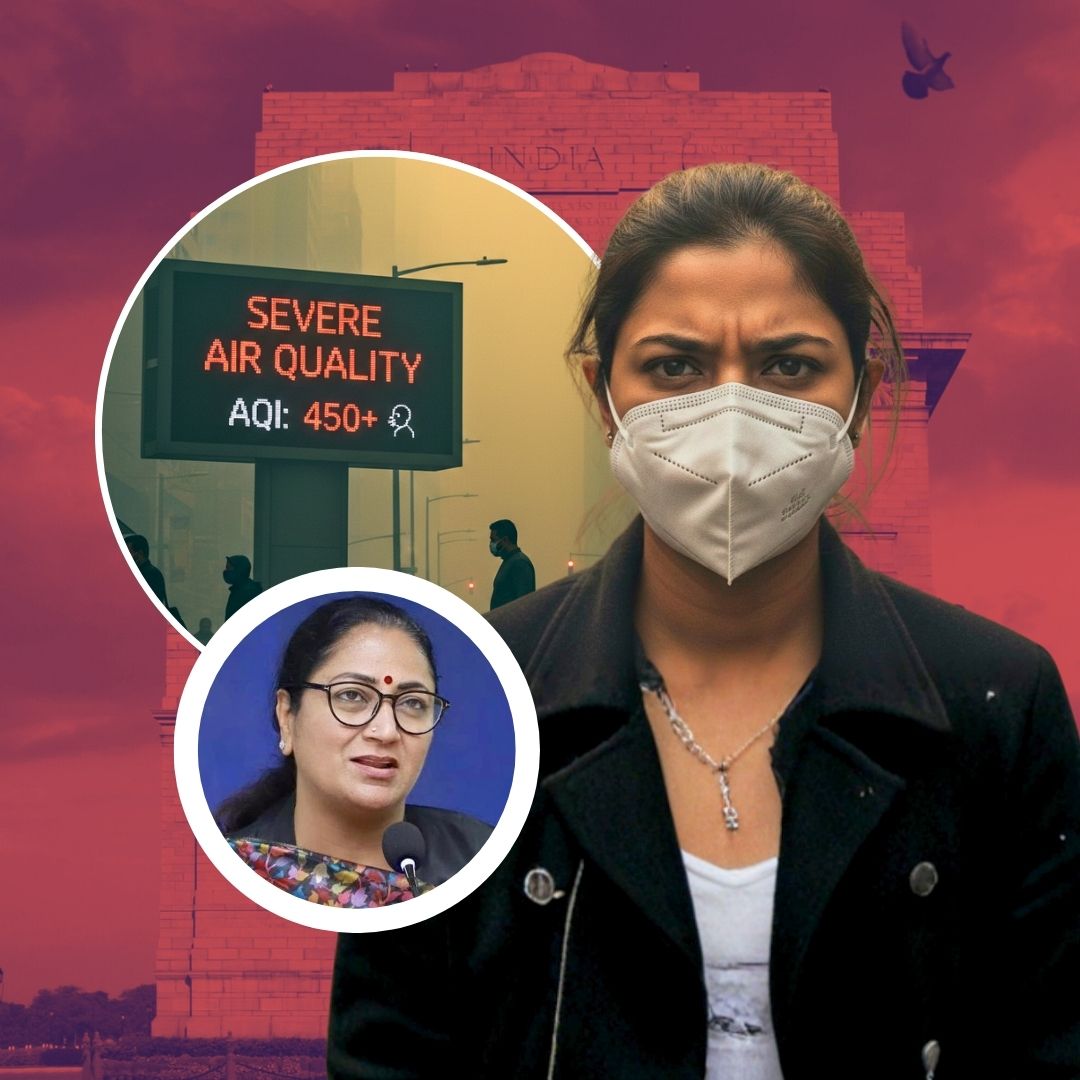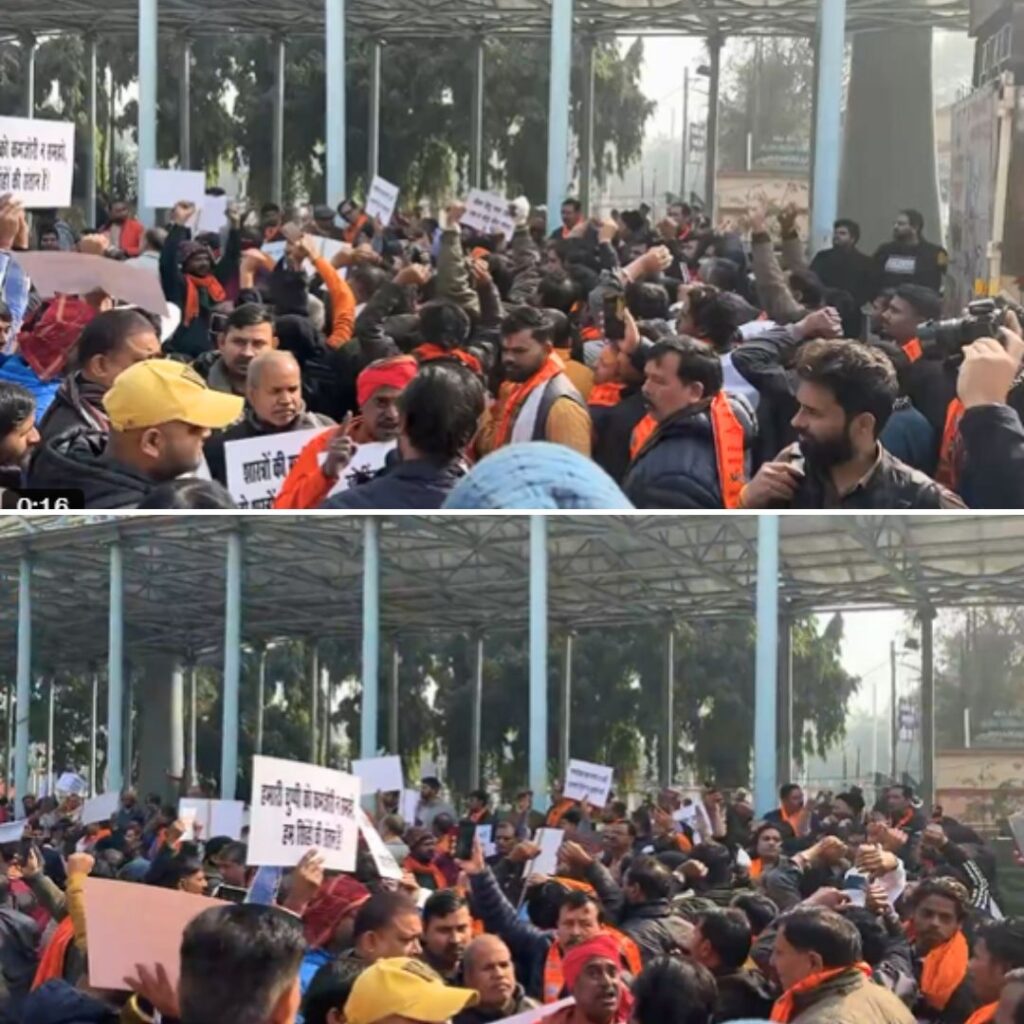On November 10, 2025, Delhi’s air quality sharply deteriorated to the ‘Severe’ category with an AQI reaching 425, prompting the Centre to invoke Stage 3 of the Graded Response Action Plan (GRAP) across Delhi-NCR.
The Commission for Air Quality Management (CAQM) mandated immediate restrictions including a ban on non-essential construction, closure of stone crushers and mining activities, and restrictions on vehicular emissions restricting BS-III petrol and BS-IV diesel cars.
Schools up to Class 5 shifted to hybrid learning mode, and authorities advised residents, especially vulnerable groups, to limit outdoor exposure amid hazardous air conditions.
Rising Pollution Triggers Emergency Response
Delhi’s pollution worsened significantly due to calm winds, a stable atmosphere, and adverse weather conditions leading to pollutant accumulation near the surface.
The city’s average AQI surged from 362 on November 9 to 425 on November 10 morning, breaching the ‘Severe’ pollution level as recorded in multiple areas including Anand Vihar (412), Alipur (442), Bawana (462), and Sonia Vihar (433).
This prompted the granting of Stage 3 GRAP restrictions, which intensify actions beyond earlier Stage 1 and 2 controls to curb emissions during the high-risk winter season when vehicle emissions, crop residue burning, and firecracker use combine with weather to degrade air quality critically.
Comprehensive Measures Enforced Under Stage 3
The CAQM has enforced a wide array of controls: a complete ban on non-essential construction and demolition activities including earthwork, piling, and operations of Ready-Mix Concrete plants; closure of stone crushers and mining operations; restriction on BS-III petrol and BS-IV diesel vehicles within Delhi and the wider NCR region with exemptions for persons with disabilities; prohibition of non-essential diesel-operated medium goods and light commercial vehicles; and inter-state diesel bus restrictions.
Governments have mandated hybrid or online schooling for children up to Class 5, and recommended work-from-home models to reduce traffic congestion. Authorities have amplified road cleaning and dust suppression efforts. The public is urged to avoid open burning of waste and ensure vehicles have valid pollution control certificates.
The Logical Indian’s Perspective
Delhi’s plunge into ‘Severe’ air pollution status is a stark reminder of the urgent need for environmental stewardship and cooperative action. While emergency restrictions provide temporary relief, long-term systemic changes in transportation, energy use, and urban planning are essential to safeguard public health and the environment.
The Logical Indian calls for persistent citizen engagement, government accountability, and innovative solutions to reduce pollution sustainably.
News in Q&A
1. What triggered the invocation of GRAP Stage 3 in Delhi-NCR?
Delhi’s AQI surged to 425 on November 10, exceeding the threshold for ‘Severe’ pollution. Weather conditions with low winds and stable atmosphere prevented dispersal of pollutants, forcing authorities to impose Stage 3 curbs as mandated by the Commission for Air Quality Management.
2. What restrictions does Stage 3 of the GRAP entail for Delhi residents?
Stage 3 curbs include a ban on all non-essential construction and demolition, shutdown of stone crushers and mining activities, restrictions on older petrol and diesel vehicles (BS-III and BS-IV), and schools up to Class 5 moving to hybrid or online learning. The public is also advised to avoid outdoor exposure as much as possible.
3. Which areas of Delhi are most affected by severe pollution currently?
Areas such as Bawana (AQI 462), Alipur (442), Anand Vihar (412), Chandni Chowk (416), RK Puram (446), and Sonia Vihar (433) are among the worst hit with hazardous air conditions, impacting millions of residents.
4. What are the main contributors to Delhi’s severe air pollution this season?
Apart from unfavourable weather trapping pollutants, the major contributors include vehicular emissions, industrial pollution, stubble burning in neighbouring states, dust from construction, and increased use of firecrackers. Local sources compound these to create hazardous air quality.
5. What advice have officials given to protect public health during this crisis?
Authorities urge residents, especially children, the elderly, and those with respiratory conditions, to limit outdoor activities, wear masks, use air purifiers where possible, and follow school directives regarding hybrid learning. Road cleaning and dust suppression initiatives are ongoing, and compliance with GRAP restrictions is critical.












